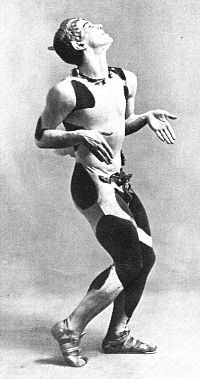
PROLEGOMENA TO EVERY FUTURE LANDSCAPE ARCHITECTURE
"Strange! So infinitesimally narrow is the threshold between the two realms, and yet no one raises their foot to cross it! The other reality borders on our skin, yet we do not feel it! Our imagination stops here, where it could create new land." --Gustav Meyrink (1921)


1/ The 'categorical' experience of the world since Immanuel Kant (and post-Kantian Critical Idealism), and the translation of such experience to fields of creative activity, is historically determined.
2/ These determinations are not prefigured in individual subjectivity but culturally constituted forms of acceptable and unacceptable behavior and conduct -- they follow one another in the architectonic of deterministic logic, not unlike lemmings.
3/ The cultural framework of this subject-object relationship is dynamic, salient and indexed at the formative and discrete threshold of language -- the so-called place of taking-place -- the intersection of structural and modal operations -- the latter which constitute the mechanics of control inherent in all discourse or language games.
4/ The language games of landscape + architecture may be constitutively altered -- in advance -- by laying bare the bare-naked operations of its genus -- through an analogical purge of its chief baggage, the formalistic game-playing of styles and empty syntactical elaborations. To this end, ludic paratactics come into play.
5/ An Artaud-inspired landscape-as-theater, or landscape-of-cruelty, where the 'dialogic' nature of landscape (nature/culture) is eliminated and the common origin of both is recovered, is the 'first return' to the nominal 'archaic' and 'pre-modern' (a putative 'pre-rational', but actually sur-rational state/site, characterized by the mark of the critical-poetic Sublime) -- a move to be repeated in a series of historiographic thrusts to the pre-Adamic, mute ground of landscape + architecture. Such a 'return' is, paradoxically, also a quantum leap forward.
6/ This mute territory, since it is also a mythic ground, may be reconstituted as an ideal condition within landscape + architecture, to be established as a liminal terra vague and/or a 'wilderness' of phonemes and archaic utterances -- a primitive topology (not typology, nor topography, but somehow both at once).
 7/ This territory is unnameable and untameable -- thereby, it is also unclaimable by discourse and rhetoric. This territory should, as a result, constitute the closest approach to the language of the world (of things-in-themselves), prior to all interpretive, instrumental and categorical operations. This 'wilderness' would serve, then, as a 'reserve' within landscape + architecture, a place to return to for 'wild' breeding stock in every future landscape + architecture, while also disclosing the source code for both things and non-things.
7/ This territory is unnameable and untameable -- thereby, it is also unclaimable by discourse and rhetoric. This territory should, as a result, constitute the closest approach to the language of the world (of things-in-themselves), prior to all interpretive, instrumental and categorical operations. This 'wilderness' would serve, then, as a 'reserve' within landscape + architecture, a place to return to for 'wild' breeding stock in every future landscape + architecture, while also disclosing the source code for both things and non-things.Gavin Keeney (2000/2004)
For the RTF (86 KB), cliquez ici ...
SMALL (BLUE) NONSEQUITUR - Géométrie, “l’éducation de l’oeil” - “4.6.6. L’expérience de la vie, mais aussi, comme le dit un peu plus haut Diderot, l’éducation de l’oeil. Ce qui ne nous avance guère. Et cependant c’était deux choses différentes, pour l’architecte, de travailler à main levée ou en s’aidant d’une règle.” Hubert Damisch, Traité du Trait: Tractatus tractus (Paris: Réunion de Musée Nationaux, 1995), p. 118 (“Géométrie”, pp. 92-126) - Exhibition catalogue, Musée du Louvre (April 26 through July 24, 1995)
OTHER SPACE(S) – "The production of the visible by the invisible, even if it testifies to itself first and foremost by perspective narrowly understood, is nevertheless not limited to only this. First because it can make manifest not only the staging of visible levels in depth (as in Flemish scenes that open themselves from an interior onto a landscape), but more so because it manifests, directly and uniquely, depth itself, in its unreal, almost complete abstraction." --Jean-Luc Marion, The Crossing of the Visible (1996)
RELATED EFFECTS

